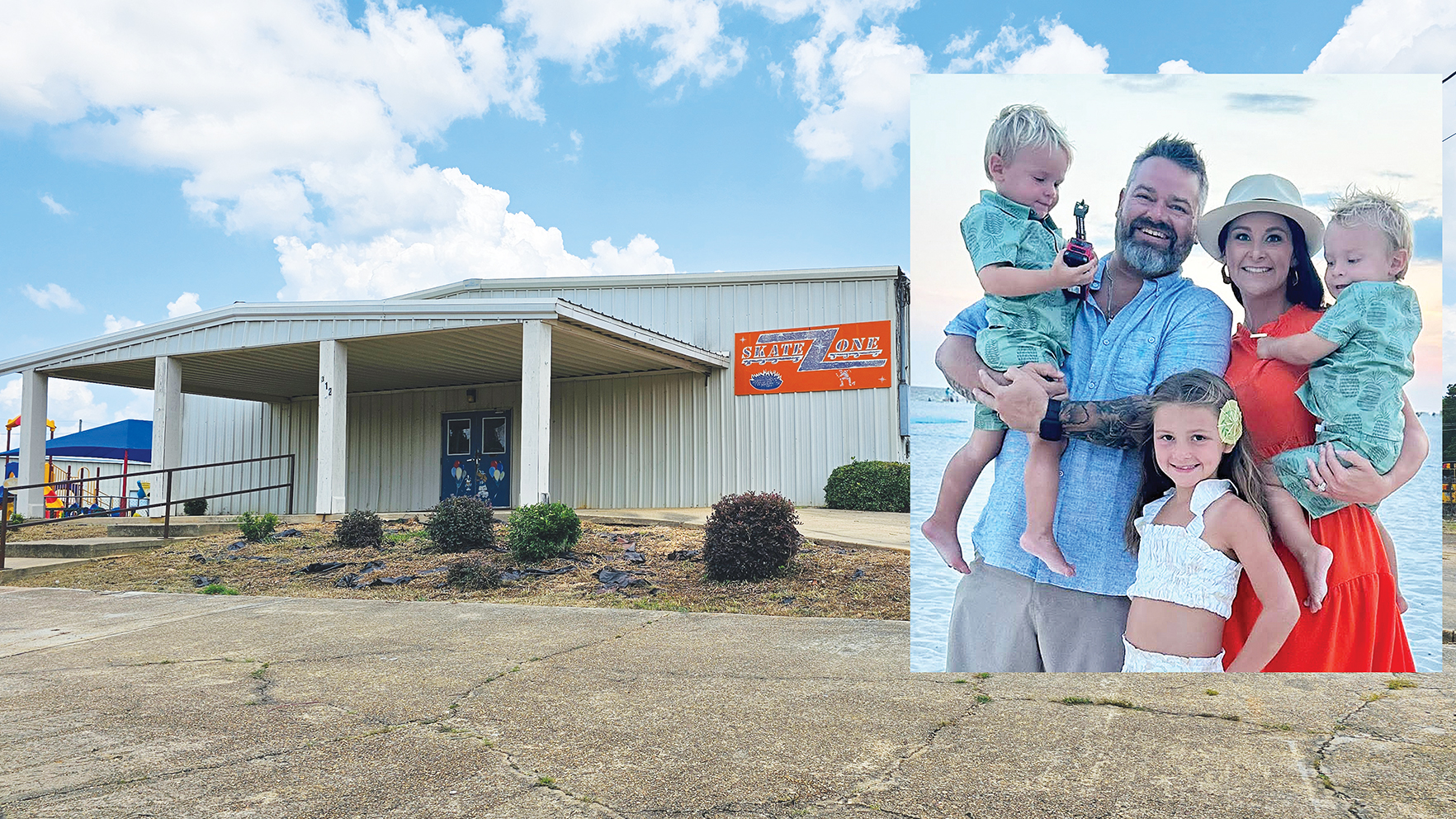Box of treasures contains specifications for historic building
Published 10:00 am Friday, October 25, 2024

- The Storm Building in present day Brookhaven is located at the corner of S. Whitworth Avenue and West Cherokee Street. (Hunter Cloud | The Daily Leader)
BROOKHAVEN — A box of treasures is now in possession of the Lincoln County Historical and Genealogical Society. Its contents may be of no significant monetary value but intrinsically they tell another part of Brookhaven’s story.
Sue Dorman said the box contains a list of burial lots sold on Rose Hill by John Eben Seavey which goes back from 1889 to 1904. A bill lists things Seavey did on Rose Hill. A notepad starts off as an order book but has a few daily journal entries written on the backside of the paper.
Dorman said they are not sure who wrote the journal but believe it was either John “Jack,” Bishop Seavey or his wife Frances Bowen. One document announces the graduation of the 1934 Brookhaven High School class. A funeral notice is also in the documents which would have been attached to light poles across the city, Dorman said.
Trending
A book from Frances Bowen Seavey’s wedding shower before her marriage to Jack Seavey contains notes of congratulations. Dorman said it must have been special because it was held onto for so long. Frances was a teacher in the Brookhaven School District for 15 years before she died in 1966. Jack died in 2000.
The most important document however records the specifications for the Storm building which was built in 1867 and renovated in 1910. It is still standing in Brookhaven at 202 Whitworth Avenue.
“We compared the writing with Capt. A. E. Moreton’s 1894 bid to build the Lincoln County Courthouse,” Dorman said. “It is an important document that is in perfect condition and signed by important people in Brookhaven’s history. It is important to me. I learned how the building was built and how much it cost.”
The box of treasures came from Seavey’s granddaughter Marjorie Shows Young. It is now under the care of the Lincoln County Genealogical and Historical Society Museum at 227 South Church Street.
Capt. Alfred Elliot Moreton signed the document along with Storm, who was one of the first settlers and merchants in Brookhaven. Moreton was a contractor, lumberman and manufacturer and died in 1925.
The Storm Building was used as a general merchandise store and used by others over the years as a tailor shop, jewelry store, a Men’s clothing store, bank, Jaines Bakery, apartments and others have kept the building in constant use since construction.
Trending
Specs for Storm
According to the letter, the foundation of the Storm building was to be erected on the grounds occupied in 1867 by Messrs, Storm and Brooks and to be dug to a firm clay foundation. Brickwork had to be done on the first story with outside walls laid at a two brick thickness with five bricks. The wall between the main building and Ell had to be one and a half bricks at three bricks above ground. All inside walls had to be nine inch walls to go through the center of the main building for the support of joists. Arches over all outside openings and office walls had to be one and a half brick thick and one story high.
Second story, all outside walls had to be one and a half bricks thick with inside walls at one brick thick. Cornice and fire walls had to be run up per plan with the best workmanlike manner and best lime on the market with good sharp sand. Chimneys and Flues had to be built “according to plan.”
The front and north side of the building had to have two coats of red paint and penciled white. The iron work needed two coats of dark color and all the woodwork needed three coats of white except the base which was two coats of dark. The store on the corner needed to be finished with glass and as many coats of paint that would make a good job.
The letter states the top of counters and counter shelves needed to be stained and varnished. Stair rails, balusters and rail and balusters around the skylight opening needed two coats of varnish. All tin work required one coat and all sash would be glazed at the factory. All the materials used needed to be the best brands and work had to be executed in good style.
Carpentry work needed to be done plain but in the best manner. Doors and sash needed to be made of cypress or pine. All lumber needed to be of the best heart pine and the size of timbers would be shown on a bill of lumber the letter states.
The ware room needed to be ceiled three and a half feet high with stair rails and balusters made of hardwood.
First story front needed to be done in iron, columns, sills, lintels and cornice. Windows and door sills throughout the building needed to be iron with iron shutters to be put on one door and all windows on the north side and on the back. Front doors had to have a grating made of half inch sound iron. Again, the letter states all iron work needed to be done in the best style with all good materials to be used.
Roof needed to be covered with slate of good quality. Tin work for the roof included all valleys, gutters and spouts made of the best dross tin. Roof on the observatory needed to be made with a good roofing tin. One coat of paint was requested for both sides of the tin.
All brick work needed to have two coats of plaster work, lathed work needed to be done with three coats and finished white. According to the letter, all work on the store and office needed to be hard finished. All cornice on the outside of the building had to be cemented and whitened. The best plaster, lime and cement were to be used.
In the ground plan of the first story, plain table counters are to be used with three on each side. Only one arch was needed.
The letter states Storm agreed to pay Moreton $2,000 upon completion of the first floor “joice” (joist). When the iron front was delivered at the depot in New Orleans, Storm was to pay a further $2,000. When the second floor of “joice,” was on, $3,000 was to be paid. When the ceiling “joice,” rafters and sheeting was on, $2,000 was to be paid.
When the slate was on and the roof was finished Storm was to pay $2,000. Once plastering was finished Storm was to pay $4,000 and when the doors, sash and shutters were delivered $2,000 was to be paid and a further $4,500 was to be paid when the building was complete.
According to the contract, Moreton had until August 20th, 1867 to complete the building
Dorman said it was special to find such a letter detailing a historic building.
“I enjoy looking at stuff like this,” Dorman said. “You don’t know what you will find.”





